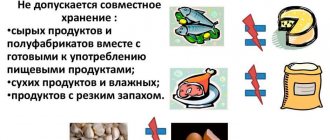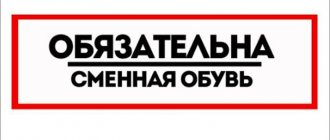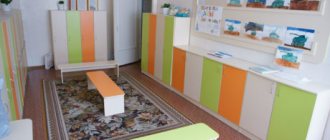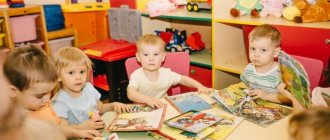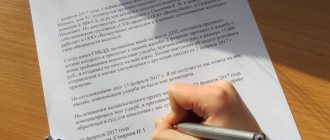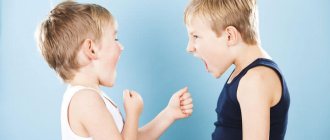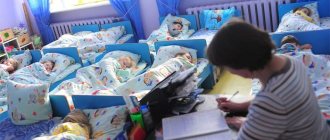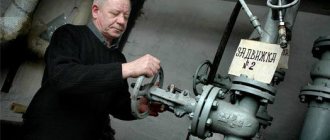Ways to achieve ideal parameters
However, not every ventilation increases air humidity. The colder the air, the less moisture it contains, so ventilation during the cold season cannot always help maintain optimal indoor air humidity. In order to create optimal conditions for children, it is necessary, first of all, to have a thermometer and hygrometer in each room. Kindergarten staff should monitor their readings.
The air temperature should remain optimal, then the air humidity will not drop too much. You can additionally increase humidity using a humidifier - a special device that saturates the air with water. Preference should be given to ultrasonic devices; steam humidifiers are not approved by specialists. It is advisable to limit the access of air to the heating radiators; to do this, they should be covered with a special screen or casing.
It is not always possible to maintain ideal air conditions. However, it is worth achieving the greatest correspondence between real and recommended indicators; the closer the real indicators are to the reference ones, the lower the morbidity rate in the institution will be.
How to correctly draw up a heating agreement for a kindergarten and how management should act in the event of interruptions in heat supply, we explain in the article. We will give you the answer to which heating systems to choose for kindergartens.
On issues of providing heating in a kindergarten, the manager interacts, first of all, with local government bodies or with heat supply organizations that, on behalf of these bodies, provide heat supply services on the territory of a municipal educational institution.
Vitaminization rules
The Sanitary and Epidemiological Rules and Standards SanPiN 2.4.1.3049-13 states:
“14.21. In order to prevent micronutrient deficiency (vitamins and minerals), food products enriched with micronutrients are used in children's diets.
Fortification of dishes is carried out taking into account the health status of children, under the supervision of a medical professional and with mandatory notification of parents about the fortification.”
The technology for preparing fortified drinks is indicated in the manufacturer's instructions.
If there are no fortified drinks in the diet, then artificial C-vitaminization is carried out in kindergarten . Volumes are calculated strictly according to the child’s age:
- for children 1-3 years old - 35 mg,
- for children 3-6 years old - 50 mg per serving.
Vitamin preparations are introduced into the third courses at a certain temperature of the latter: the temperature of compote should be 15 C degrees, jelly - 35 C degrees.
Fortification in kindergarten is displayed in a special journal, where the data is entered by a medical worker .
The log must indicate:
- Date of.
- Name of the drug.
- Name of the dish.
- Number of people eating.
- The total amount of vitamin preparation added.
- Time to apply the drug or prepare a fortified dish.
- Meal time.
- Notes.
The log is kept for a year. All questions regarding preventive measures to increase immunity can be addressed to the medical professional who is the person responsible for organizing healthy nutrition in the kindergarten.
The SES may allow a temporary (seasonal) break in C-vitaminization based on laboratory control of dishes . This is possible if fruit and vegetable dishes and other products used for nutrition in kindergarten contain amounts of vitamin C in accordance with the norms of people's need for this organic substance approved by the USSR Ministry of Health.
SanPin for kindergartens with changes for 2020
The respiratory system of a child is much less perfect than that of an adult. Therefore, measures to create a favorable breathing environment in a music hall are of fundamental importance: ventilation and wet cleaning.
In necessary cases, with the permission of the executive committees of local Councils of People's Deputies, duty groups may be opened in preschool institutions on Sundays and holidays. 5. Kindergartens should be designed for one, two, four, six, eight, twelve and fourteen groups with a number of seats, respectively, of no more than 25, 50, 95, 140, 190, 280, and 330 seats.
I would like to immediately reassure worried parents. The operation of kindergartens in 2020 is impossible without compliance with sanitary and epidemiological requirements.
Thus, dry air can lead to asthma and other unpleasant diseases in a child.
When placing their child in the hands of a kindergarten teacher in 2019, all parents, and especially mothers, are very worried. How will they take care of their beloved baby? Is there ventilation in the rooms? Does the kindergarten premises meet sanitary and hygienic requirements? At what time intervals are quartzing and general cleaning done?
It is allowed to use a group room for organizing sleep using pull-out beds or folding beds with a hard bed.
Window and door devices, trims, boxes, frames, door panels, glass, handles, brakes, hinges, transom devices must be completely intact and function properly.
The exhaust openings of the central exhaust system should be located at the top of the wall, two for each group room, kitchen, lobby and hall, and one for restrooms, storage rooms, doctor's office and other areas of the kindergarten. Each exhaust opening must be equipped with special blinds to regulate the outflow of air from the premises.
The group cell includes: a dressing room (reception) (for receiving children and storing outerwear), a group room (for games, activities and meals), a bedroom, a pantry (for preparing ready-made dishes for distribution and washing tableware), a toilet ( combined with a washroom).
By the way, the situation returned to normal very quickly, and now in Nastya’s group the average air temperature is 22 degrees. The teachers themselves note that being in the room has become much more comfortable.
You can either call them or submit a written complaint. You can write electronically from the website of the Rospotrebnadzor office for your region.
What should parents do when a violation is detected?
Rospotrebnadzor monitors compliance with SanPiN. If you notice that any of the kindergarten employees are violating sanitary standards, contact Rospotrebnadzor. You can either call them or submit a written complaint. You can write electronically from the website of the Rospotrebnadzor office for your region.
Some issues that relate to compliance with SanPiN in kindergartens are also decided by the education departments. You can also contact them with a written complaint, email or call.
If officials cannot or do not want to solve this problem, contact the prosecutor's office. The Office of the Ombudsman for Children's Rights in your region can help you.
The health of children largely depends on the correct temperature regime in the kindergarten. Therefore, you need to carefully ensure that sanitary standards are observed in the kindergarten.
Water supply and sewerage in children's and adolescent institutions
Buildings of children's and adolescent institutions must be equipped with running water, hot water supply and sewerage.
In unsewered areas, children's institutions must be equipped with internal sewerage, subject to the installation of local treatment facilities. The quality of water must meet the sanitary requirements for drinking water in accordance with the current GOST 2874-82 “Drinking water. Hygienic requirements and water quality control.”
In nurseries with daytime use, water consumption is calculated at the rate of 75 liters per day per child, with children staying 24 hours a day - 100 liters; at school - 15-20 liters, at boarding school - 70-95 liters per person, excluding water consumption in the dining room and laundry.
In preschool institutions, hot water supply is required in the kitchen, laundry room, playroom of the 1st early age group, pantry and toilet rooms of all groups. In winter, showers and washbasins should be supplied with a temperature of 37-60 ° C.
Sanitary equipment in educational institutions is presented in table. 21.
Table 21. Sanitary equipment in children's and adolescent institutions
In schools and boarding schools, cold water supply is provided to the sinks of chemistry, physics and biology laboratories; to washbasins in classrooms of grades 1–4 and in after-school facilities; to flush cisterns in bathrooms. Cold and hot water is supplied to washbasins in drawing and fine arts classrooms (informatics and electronic computer technology, study rooms and a military office; workshops, teachers' room, catering department; to showers and bathtubs, etc.
The temperature of the hot water supplied to the faucets of the appliances should not exceed 60 ° C. For schools, boarding schools and boarding schools at schools built in unsewered areas, it is allowed to install warm cesspool-type toilets connected to the building through a double vestibule.
In v IV Climatic region, as well as in rural areas, it is allowed to install
free-standing cesspool toilets. Outdoor latrines are made with waterproof pit cesspools. They are located at a distance of at least 25 m from housing and industrial buildings, 50 m from water supply sources. The walls and roof of the outhouse must have no cracks, the floors must be stable, the doors must be tightly fitted and self-closing; Restrooms must have an exhaust pipe with a deflector at the top, natural and artificial lighting. The opening for natural light should be covered with a fine mesh. Toilets are equipped at the rate of 1 point per 15-20 people.
Garbage and kitchen waste are collected in enameled or galvanized buckets with lids, and then poured into garbage bins or cesspools. Cesspools are made waterproof from stone, brick, concrete blocks with a cement binder. Hatches for cleaning cesspools are equipped with well-fitting double lids that can be locked.
The compost heap is placed on the territory of the household yard near the agricultural plot.
Other articles from the section “Chapter 9. Hygienic requirements for planning and improvement of children’s and adolescent institutions”:
·
Layout of children's and adolescent institutions in the city and rural areas
·
Hygienic requirements for the building of children's and adolescent institutions
·
Lighting in children's and adolescent institutions
·
Air-thermal conditions in children's and adolescent institutions
> ·
Water supply and sewerage in children's and adolescent institutions
·
Sanitary maintenance site and premises of children's and adolescent institutions
·
Hygienic principles of planning out-of-school institutions
← + Ctrl + → Forward >>
Quarantine periods in kindergartens.
How long quarantine lasts in kindergarten depends on the disease.
In case of seasonal acute respiratory infections, influenza, quarantine is imposed if more than 20% of children in the group (or kindergarten) become ill.
In case of serious pathologies, quarantine is declared for one sick person.
Deadlines for:
- Flu, scarlet fever and E. coli – a week.
- Viral meningitis, meningococcal infection - up to 10 days.
- Mumps, chickenpox, rubella – 3 weeks.
Preschool employees must inform parents about a case of illness, even if it occurred in another group.
In turn, the mother and father are obliged to inform the kindergarten if their child has been diagnosed or has had contact with a sick person.
Temperature conditions in kindergarten according to SanPiN
It seems to me that it is cold there. But the administration claims that the temperature is normal, the child is just sick. Is there an objective criterion for temperature in child care institutions? Tamara Varfolomeeva, Moscow There are “Sanitary and epidemiological requirements for the design, maintenance and organization of work in preschool organizations” SanPiN 2. Appendix No. 3 to these rules regulates the required air temperature values for the main premises of preschool educational institutions. For example, in the reception, playrooms and toilet rooms of nursery groups the temperature must be maintained at 10 degrees, in junior preschool groups - in the bedrooms of nursery and preschool groups - , in the halls for music and gymnastics classes - , in halls with a swimming pool - at least 29, in locker rooms with showers and in swimming pools - , in medical premises - degrees. In winter, the floor temperature in group rooms located on the first floors must be at least 22 degrees. In addition, the rules establish that window glazing must be made of solid glass, and broken glass must be replaced immediately.
Temperature standards in the bedroom and other areas of the kindergarten
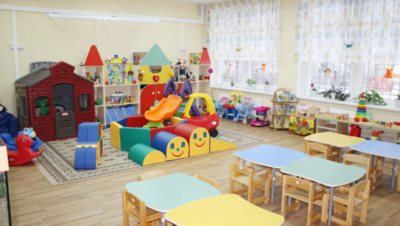
Temperature standards may differ in different age groups and rooms:
- For a nursery group, the air temperature in playrooms should not be higher than +22-24 °C.
- In the playrooms of the junior, middle and senior groups, the norm will be +21-23 °C. If the temperature is higher, children may sweat during active games.
- According to SanPiN, the air temperature in the bedrooms of all groups should not exceed +19-20 °C, because children sleep under a blanket and they may become hot.
- In the toilet rooms of the nursery group, the temperature should be +22-24°C, and in the other groups - +19-20°C.
- In music and gymnastics rooms the recommended temperature is +19-20°C.
- The temperature should be higher in the rooms where the guys undress down to their T-shirts and panties. These could be medical rooms, showers or a swimming pool, if there is one. The recommended norm for such premises will be +25-26 °C, and for a swimming pool the temperature should be at least +29 °C.
Walking time in preschool educational institution on SANPIN
The routine in kindergarten is the same for all children.
Therefore, if at home you are used to sleeping until lunch, not putting your child to bed and eating whenever you want, then before entering a preschool institution you need to bring your home daily routine as close as possible to the routine in kindergarten. This will help the child during the adaptation period.
Typically, three-year-olds easily adapt to kindergarten. At this age, they are ready to communicate with their peers and other adults and gain new knowledge.
Being raised at home, the child does not receive the necessary social communication.
In addition, in kindergarten, classes with the child are conducted according to a special program that corresponds to his age characteristics.
In a group of peers, it is much easier for a child to learn to communicate or gain self-service skills by looking at other children.
And in order for your child to endure the adaptation period even easier, you need to accustom him to the regime within 2-3 months. It is very difficult to maintain a rigid daily routine at home.
The regime in different kindergartens may differ, but its principle is the same everywhere.
Approximate daily routine in kindergarten
Meals and sleep remain constant in the daily routine. The walk depends on weather conditions and time of year. If the weather is bad, games or activities are held at this time. Some kindergartens also have a second breakfast.
Do you want to know the microclimate of your family? Take the TEST ON OUR WEBSITE and find out if anything needs to be changed
Requirements for the daily routine in kindergarten according to SanPiN
Children are provided with four meals a day at the group premises. The interval between meals is no more than 4 hours. For more information about diet, diet and menu, see here.
A walk is organized 2 times a day: in the first half of the day and after sleep, which is a total of 3 - 4 hours. At temperatures below -15°C and wind speeds of more than 7 m/s, the duration of the walk is reduced.
Daytime sleep for children from 3 to 7 years old is 2 - 2.5 hours. During nap time, the presence of a teacher in the bedroom is mandatory. Before going to bed, it is not recommended to conduct active and emotional games and activities.
All rooms must be ventilated daily.
Through ventilation is carried out at least 10 minutes every 1.5 hours in the absence of children, 30 minutes before they arrive from a walk or activity.
In the presence of children, ventilation is permissible only in the warm season without a draft. When ventilating, the air temperature should not drop by more than 2-4°C.
Bed linen is changed at least once a week.
Have you already chosen what to give your baby for New Year? How to please and surprise your beloved baby? The New Year family holiday is an opportunity to give your child bright emotions from shared entertainment. Let your baby remember this magic and fairy tale for the rest of his life! The best New Year's greetings for a baby - personal interactive greetings!
To say that it is magical is to say nothing! The cub sat with his mouth open and believed that it was really Santa Claus talking to her. I bought it every year and never regretted it.
Now, of course, she’s grown up and it’s difficult to surprise her with Santa Claus... Thank you for being able to give your baby a fairy tale for the New Year!”
Download the series as a New Year's gift and you will see how much happiness your child will receive from watching the fairy-tale game plot! Look at all the unusual options for New Year's greetings for your baby HERE!
Organization of classes
It is mandatory for the harmonious development of the child to include developmental activities in the daily routine according to SanPiN, which subsequently serve as preparation for school.
Classes in kindergarten are conducted in the main areas:
- musical;
- physical training;
- art;
- classes to develop fine motor skills;
- speech development classes;
- introduction to basic mathematical knowledge.
Activities that require increased cognitive activity and mental stress of children are held in the first half of the day and alternate with physical education and music classes to avoid overworking the child.
The continuous duration of an educational lesson for a preschooler does not exceed:
- 10 minutes for children 3 - 4 years old (younger group);
- 15 minutes for children 4 - 5 years old (middle group);
- 20 minutes for children 5 - 6 years old (older group);
- 30 minutes for children 6 - 7 years old (preparatory group).
No more than 3 classes are held per day. Breaks between classes are at least 10 minutes.
Physical development classes
Physical development classes are held at least 3 times a week. Their duration ranges from 15 to 30 minutes depending on the age group. In summer, such activities are recommended to be carried out outdoors.
Requirements for new SanPiN standards
The rules for ventilation of kindergarten groups are regulated by Chapter VIII of SanPiN 2.4.1.3049-13 (“Requirements for heating and ventilation”). The main provisions of the section related to aeration:

- All premises of a preschool organization must be ventilated daily. Ventilation is carried out for at least 10 minutes every 1.5 hours (clause 8.5.).
- Through ventilation in the presence of children is not carried out (clause 8.5.).
- Ventilation through toilet rooms is not allowed (clause 8.5.).
- In the presence of children, wide one-way aeration of all rooms is allowed in the warm season (clause 8.5.)
- When airing, a short-term decrease in the air temperature in the room is allowed, but not more than 2-4°C (clause 8.6.)
Aeration is one of the most effective and affordable ways to maintain a comfortable microclimate. With properly organized circulation of air masses, the likelihood of contracting a viral infection decreases. Oxygen saturation has a beneficial effect on children's well-being, improves their sleep and helps them concentrate on classes. It is important to observe sanitary rules, follow the approved schedule and avoid situations that may cause hypothermia.
Kindergarten ventilation
It is prohibited to use asbestos-cement and plastic sewer pipes for the construction of a channel system. It is contraindicated to vent exhaust from bathrooms, kitchens, dryers and rooms where children play and relax into a common air duct. In rooms with high humidity, exhaust equipment must be installed to constantly pump out fumes, odors and volatile compounds. Specifics of ventilation systems in kindergartens From a technical point of view, the design of air exchange systems in kindergartens is carried out according to the same standards as for other ventilation systems with similar performance. But in practice, a number of specific nuances should always be taken into account. The main feature is that ventilation in kindergartens is entrusted with not only the task of mechanically renewing the required volumes of air, but also the direct prevention of colds. The preventive effect in this case is achieved in two ways: creating an air environment that is as less conducive as possible to the transfer of pathogenic bacteria and viruses; maintaining optimal temperature and humidity air parameters necessary for the normal functioning of the child’s immune system; creating such dynamics of air exchange that would eliminate local or general hypothermia of children. Temperature restrictions are maximum C for bedrooms, and maximum C for playrooms.
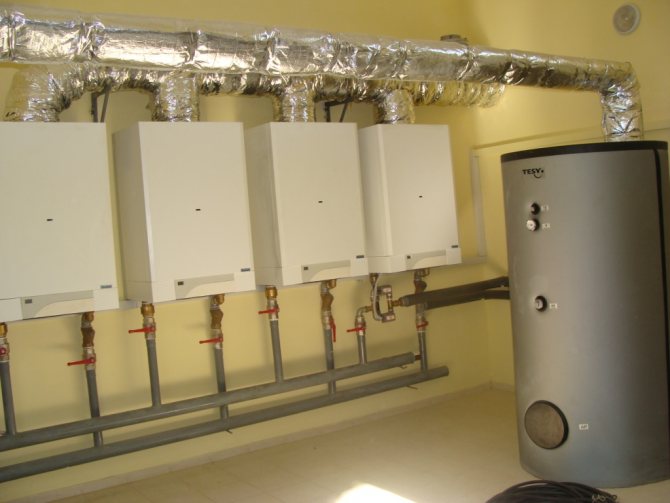
Preschool educational organizations operate in a short-term stay of up to 5 hours a day, a shortened day of 8-hour stay, a full day of 10.5-hour stay, an extended day of 13-hour stay and round-the-clock stay of children. These sanitary rules do not apply to family groups located in residential apartments and residential buildings. These sanitary rules are mandatory for all citizens, legal entities and individual entrepreneurs whose activities are related to the design, construction, reconstruction, operation of facilities of preschool educational organizations carrying out educational activities, as well as preschool educational organizations providing child development services, further - preschool educational organizations. These sanitary rules do not apply to facilities that are in the design, construction, reconstruction and commissioning stages at the time these sanitary rules come into force. Previously constructed buildings of preschool educational organizations are operated in accordance with the project according to which they were built. The functioning of preschool educational organizations implementing the main educational program is carried out in the presence of a conclusion confirming its compliance with sanitary legislation and these sanitary rules, issued by the body authorized to carry out federal state sanitary and epidemiological supervision and federal state supervision in the field of consumer protection for the purpose of licensing educational activities . The preschool organization accepts children aged from 2 months to 7 years. The selection of a mixed group of different ages should take into account the possibility of organizing a daily routine in it that corresponds to the anatomical and physiological characteristics of each age group. The number of children in groups of a preschool educational organization with a general developmental focus is determined based on the calculation of the area of the group playroom - for early age groups up to 3 years old, at least 2.5 square meters per child and for preschool age from 3 to 7 years - at least 2.0 square meters per child actually in the group. The number and ratio of age groups in a preschool educational organization of a compensatory type, which carries out qualified correction of deficiencies in physical and or mental development, is determined taking into account the characteristics of the psychophysical development and capabilities of the pupils.
Organization of drinking regime in preschool educational institutions in accordance with the requirements of SanPiN
Grinchenko Anzhelika
Organization of drinking regime in preschool educational institutions in accordance with the requirements of SanPiN
In the kindergarten, a proper drinking regime must be organized to ensure the safety of the quality of drinking water , which meets the requirements of sanitary rules .
The drinking regime in preschool educational institutions is organized using boiled water, provided that it is stored for no more than 3 hours.
Drinking water must be available to pupils during the entire time they are in the preschool educational institution. The approximate amounts consumption by a child depend on the time of year, the physical activity of the child, and, on average, amount to 80 ml per 1 kg of his weight. When a child is in a preschool educational institution full day, the child must receive at least 70% of the daily water requirement .
The temperature of drinking water given to the child is 18-20 C.
Water is given to the child in ceramic cups. In this case, clean cups are placed in a specially designated place on a special marked tray (upside down, and a separate tray is placed for used glasses. Cups are washed in an organized manner , in tableware washing stations.
Boiling is carried out in a catering unit in a specially designated container. The boiling container is processed daily at the end of the working day.
In the summer, the drinking regime is organized during a walk. Drinking water is taken outside by the teacher's assistants in an appropriate container (a kettle with a lid, poured into cups by the teacher at the request of the children.
The organization of the drinking regime is monitored by preschool medical workers on a daily basis.
The availability of boiled water in the group is monitored by the assistant teacher.
The drinking regime in kindergarten is carried out in accordance with the requirements of SanPiN 2.4.1.3049-13
The kindergarten has organized a drinking regime that ensures the safety of the quality of drinking water , which meets the requirements of sanitary rules .
1. The drinking regime in preschool educational institutions is organized using boiled water, provided that it is stored for no more than 3 hours.
2. Drinking water must be available to pupils during the entire time they are in the preschool educational institution.
3. The temperature of drinking water given to the child is 18-20 C.
4. Boiling is carried out in a catering unit in a specially designated container.
5. Treatment of the boiled water storage container is carried out daily at the end of the working day.
6. Processing of teapots (steaming, before the morning distribution of water, is carried out by an auxiliary worker.
7. Water is collected into the tank and distributed to groups by the cook.
8. Collect water into a container for storing boiled water 30 - 40 minutes before distribution.
9. Organization of the drinking regime , adherence to the schedule for filling the tank, distribution to groups is controlled daily by the chef and medical workers.
Boiled water is provided from the catering unit strictly 4 times a day:
* 7.20 – 7.30 hour, teachers
* 10.00 – 11.00 hours, ml. teachers (depending on age
children)
*13.00 - 13.20 hours, ml. educators
*15.00 - 16.00 hours, ml. educators
When organizing a drinking regime , along with drinking water , children are offered:
A variety of juices, compotes, jelly, hot tonic drinks (tea, coffee drink, cocoa)
.
Heating supply and ventilation system of a kindergarten regime and standards
Fresh air ? This is a necessity for small children, it gives them the opportunity to grow, ensures the full functioning of all organs, and helps prevent the occurrence of allergies and respiratory ailments. Due to this, authorities and supervisory authorities place greater demands on institutions where preschool children are kept and stay for a long time. Strict, scientifically based standards are being developed according to them, so that nothing threatens the health and safety of children. Kindergartens must have visiting pupils in conditions that fully comply with the rules? in particular, they need to worry about timely and high-quality ventilation.
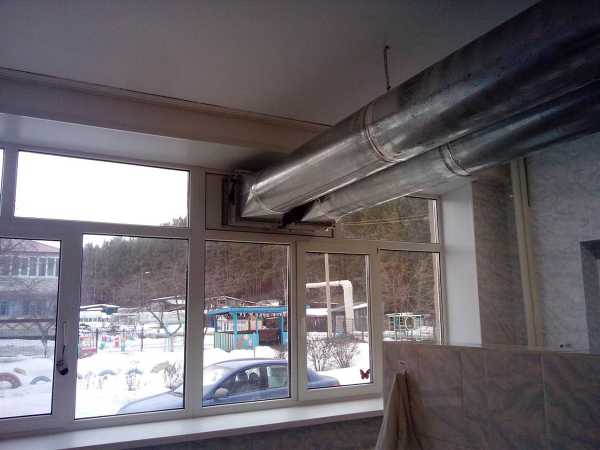
Children spend a lot of time in kindergarten. They gather in groups, sometimes quite large, and ensure the quality of ventilation? a significant and difficult task. Air characteristics (purity, humidity, temperature)? important factors in maintaining the health and activity of children. The heat supply and ventilation system of the kindergarten, established in accordance with the standards, help maintain immunity, help harden the body and allow:
- reduce the level and frequency of illnesses caused by viruses and infections;
- guarantee the influx and circulation of fresh air flows rich in oxygen;
- create a wonderful microclimate;
- remove air pollution;
- improve indoor humidity;
- reduce heating and air cleaning costs.
We recommend ready-made solutions for ventilation of kindergartens and schools. Read more.
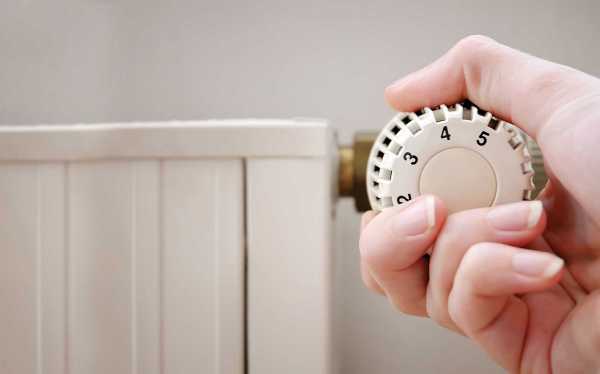
Parameters and limitations for air ventilation systems in kindergartens
The ventilation project for a kindergarten is always developed carefully. At the first step, engineers collect all information about existing restrictions, standards, requirements
It is contained in specialized tables (for design temperatures and air exchange), which arise in sanitary control authorities, and take into account seasonality, regionality and all other factors
The ventilation mode of kindergartens takes into account many contraindications:
- it is impossible to seal the natural inflow holes in the windows (their presence on each window in the first place);
- after children leave bedrooms, educational or sports premises, it is necessary to actively ventilate them;
- if the outside temperature is not higher than +20°C, then it is impossible to keep the windows open for longer than a three-minute period;
- in rooms where there are children, there should be several holes for natural air exhaust (along the upper edge);
- the area of the ventilation holes (simultaneously with the vents) should be related to the floor area as 1/50;
- The ventilation system in utility rooms (laundry room, bathroom, kitchen) should not pass through children’s rooms.
The ventilation standards for kindergartens have been developed in detail and are regulated by SNiP P-L No. 3-71. At least 50 m3/h per hour should be supplied per child.
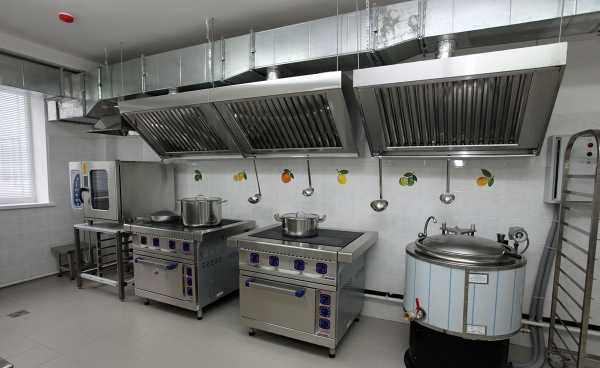
Organization of ventilation in kindergartens
The key type of ventilation used in kindergartens? supply and exhaust. In every room where children spend a lot of time, you need to provide an excellent microclimate. Polluted air can be removed through neighboring rooms, for example, from the bedroom through the playroom.
The ventilation system in the catering unit in a kindergarten must be organized very carefully. It is impossible for ducts and exhaust air vents to pass through rooms where children spend a long time, play, dine and sleep. The same applies to toilet and laundry areas.
Additional vitaminization
There are examples of additional fortification, with the exception of vitamin C. For example, in the north, in Murmansk, fish oil was officially introduced into the diet in kindergarten. Additional vitamin supplementation in kindergarten should help improve immunity, which is simply necessary in northern conditions. All children of senior preschool age can eat a fish delicacy.
In addition, you probably noticed that your child talks about the delicious chocolate they give in kindergarten. This is a hematogen - a source rich in iron, which children also receive regularly in preschool institutions.
Parents write:
Anastasia Kovaleva: - Today I met a nurse. She said that starting next week, children will be given blueberry forte, revit, anaferon and iodomarin.
Lyubov Polikarpova: — The most we were given in the garden was oxygen cocktails. I give the child all sorts of anaferons and vitamins at home.
Valeria: - In our kindergarten, food is fortified, but only with vitamin C. Moreover, all parents were asked in advance if they were against it and were given a paper to sign. They offered even more vitamins, but most parents refused. Therefore, only vitamin C remained.
In the event that additional vitamins are introduced into the food in the garden, then this must have the consent of the parents. The child may be allergic or simply not feel the need for additional health prevention. For example, the use of iodomarin is possible only after the recommendations of an endocrinologist.
Author: Maria Danilenko.
Residents of Karpinsk ask the head of the city administration to start the heating season earlier
The cold weather in recent days - not counting today - has forced some Karpin residents to turn to influences with a desperate letter. The initiators were the parents of kindergarteners, concerned that in the groups of virtually all city kindergartens it was very cold.
Surely, many city residents are currently looking forward to warmth more than anything else. Photo: pixabay.com
An open appeal to the head of the city administration Andrei Klopov
Dear Andrey Alekseevich!
In connection with the current situation, we ask you to take measures to start the heating season ahead of schedule. In kindergarten groups it is cool (in the playroom in the morning it is 14 degrees Celsius, in the evening - 16 degrees, in the bedrooms - 16 degrees), children walk in groups in warm sweaters and pants, and catch colds. Cold days have become the reason that sanitary and epidemiological standards are currently not met in kindergartens, because SanPiN takes into account the required value of home temperatures in preschool educational institutions within the range of 19-22 degrees Celsius (reception rooms, playrooms, groups - 21-22 degrees more zero, in bedrooms according to sanitary rules it should be 19-20 degrees Celsius). We kindly ask you to connect the heat supply to kindergartens, schools and other social facilities.
In fact, in virtually all preschool institutions in Karpinsk it is currently cold. This is proven by the head of kindergarten No. 1 “Ladushki” Valentina Marenina. “The situation is similar everywhere,” says Valentina Semyonovna. “We even had a conversation at the level of the education department, and Raisa Aleksandrovna (meaning Raisa Churkina, head of the education department - editor’s note) is aware of the situation.” Today, August 27, in the playroom (group) of kindergarten No. 1, says Valentina Marenina, the temperature is 20 degrees Celsius, which may be partially due to the fact that it is a fairly warm, fine day outside.
Raisa Churkina, meanwhile, proves that there is a problem. “Parents don’t contact the education department specifically,” says Raisa Aleksandrovna, “they go to the head of kindergartens. And at the meeting on August 24, all these questions and complaints were naturally voiced, but we do not make such decisions.” According to Raisa Churkina, it is forbidden to use devices with a heating function in kindergartens - this is already a violation, so teachers and heads of kindergartens advise parents to dress their children warmly and bring pajamas. “In the playrooms,” added Raisa Aleksandrovna, “the temperature evens out throughout the day - there the children play and move. But in the bedrooms it’s cool.”
According to the head of the education department, in previous years there was experience of starting the heating season before September 15 - “two or three days, but they started earlier.” This became possible if the average daily street temperature for five days is usually +8 degrees Celsius.
Director of the Dom management company Alexander Pilnikov says that it is impossible to start the heating season earlier only in kindergartens and other social facilities. Under any circumstances, the entire city will have to be included and, Alexander Leonidovich believes, if such an order from the head of the city arises, the season may begin before the planned and already classic date for Karpinsk - September 15. “It’s clear that people are uncomfortable - it’s cool in residential areas and in kindergartens,” says Pilnikov. – For example, I live in my own house and turned on the heating boiler, albeit at a minimum, back in July. Never turned it off. The weather is not kind to us now.”
Cleaning premises in preschool educational institutions - basic rules
SanPiN regulates the basic procedure for cleaning premises in all preschool institutions, which is mandatory. Twice a day it is necessary to carry out wet cleaning using safe detergents. Wet cleaning includes wiping surfaces from dust and washing floors. Bedrooms are cleaned after quiet time, meal rooms after meals, and gyms after classes.
Wet cleaning of premises in a preschool educational institution also includes mandatory washing of all objects with which children interact: toys, furniture, sports equipment, etc. All tables must be washed with soap before and after meals. It is also necessary to clean chairs and changing tables in nursery groups. Sports equipment is cleaned after each child's gym session. Mats are cleaned with soap and soda solution.
Particular attention must be paid to washing and disinfecting bathrooms. Toilets, cisterns, shower trays, sinks, taps must be washed with soap and treated with a disinfectant. Children's potties should be cleaned with a brush and soap after each use.
What are the temperature standards in kindergartens for 2020?
Admin Preschool Age The online magazine fraui has already talked about the causes of frequent illnesses in children, which are associated with the fact that our kids, and no longer kids at all, spend most of the day in poorly ventilated areas with dry, warm air. This air dries out the mucous membranes, which does not allow local immunity to work fully, retaining and destroying all kinds of microbes
It is quite important to monitor the child’s immunity, since it is he who plays the role of the main obstacle to all illnesses.
Helping children's immunity and eliminating factors harmful to the child's health is not at all difficult: you need to regularly ventilate, of course, avoiding drafts in the presence of children, maintain normal air humidity in the house, and do not neglect walks in any weather!
But is the same healthy regime maintained in the kindergarten where you bring your baby every day and where he spends most of the day? How is the regime implemented in kindergarten? Not everyone will be able to answer this question, mainly because few people even think about it. In the morning, rushing to work, we bring the child to the group, at the edge of our consciousness we note that the room is warm, and oh well. But, as we already said, warmth is not always your friend.
At the same time, there are clear rules for kindergartens, schools and other child care institutions. Moreover, the work of a kindergarten according to these rules was not invented yesterday, it is not a whim of the kindergarten administration or the teacher, and not even the fulfillment of the wishes of parents. All the standards specified in this document were established in accordance with the results of scientific research and observations, and therefore are intended to provide an optimal regime in kindergarten, in which the incidence of illness among children would tend to zero.
Among the main parameters: air temperature in group rooms; relative humidity; air exchange intensity. How should it be? It is quite possible that he is already in the group, then just ask for his testimony. Exceeding the upper limit by even one degree already creates a danger to the health of children.
It is more difficult to figure out air humidity; it is measured by an unknown device with a hygrometer, which, unlike a regular thermometer, is unlikely to be found in the entire kindergarten. A hygrometer, in fact, is a fairly simple and quite affordable device; prices for the simplest models start from two hundred rubles. It is perhaps almost impossible to measure the intensity of air exchange; it largely comes down to ventilation of rooms, and the SanPiN describes the rules for this ventilation.
Failure to comply with these rules leads to the fact that the child often gets sick in kindergarten and the immune system cannot protect his body. These are the rules: corner and through ventilation is carried out in the absence of children; in the cold season, bedroom ventilation should end 30 minutes before bedtime; during sleep, windows or transoms should open and close the same 30 minutes before getting up; when it’s warm outside, windows should be open while sleeping; In the presence of children, drafts must be avoided.
Do these conditions seem barbaric to you? But these standards, developed by scientists and doctors, are designed for ordinary people! There are also ventilation rules for school classrooms. Where is the commission on kindergartens looking? It is logical that if there are rules, then there should be those responsible for their implementation. This is the administration of the kindergarten, a medical worker, a doctor or a nurse, which is mandatory in every preschool institution, and also this is the Sanitary and Epidemiological Inspectorate.
Unfortunately, neither the presence of rules enshrined in law, nor the presence of responsible persons and regulatory authorities change the situation in any way. Today it is almost impossible to find a kindergarten whose conditions would meet the requirements of SanPiN. And here’s the paradox: it’s impossible to say that the temperature regime is not controlled at all. It is controlled, just like that, only one-sidedly. What is the air humidity in the group rooms of the garden and how ventilation is carried out is a mystery shrouded in darkness.
Well, we, parents, fortunately, have certain rights and opportunities to influence the current situation and achieve normal, healthy conditions for our children.
Ventilation of groups in kindergarten
Ventilation should be carried out daily. The exact schedule is formed depending on the season and duration of the groups’ work. The following types of ventilation are distinguished:
- through or corner - allowed only if there are no children in the room;
- one-sided - acceptable in the presence of pupils, but only in warm weather.
The most effective is through and corner ventilation. Its duration depends on the outside air temperature, the presence and strength of wind, as well as the intensity of heating supplied to the kindergarten. Cross ventilation in preschool premises is carried out in the absence of children and should be completed no later than 30 minutes before their arrival. This will eliminate the risk of hypothermia and optimize the indoor microclimate before the babies return.
In the bedrooms, cross-ventilation is carried out before quiet time. Ventilation of premises in preschool educational institutions through toilet rooms is prohibited. In the summer, it is allowed to ventilate rooms in the presence of children, provided there is no wind, avoiding significant drafts (one-way ventilation). This change was introduced in the new SanPiN 2020. The updated regulations also allow for minor deviations from the standard temperature in rooms downward (22 degrees in bedrooms and 24 in playrooms). Exceeding these indicators is strictly prohibited, as it can negatively affect the well-being of children. In order to comply with these restrictions, regular micro-ventilation is allowed.
Normal temperature in kindergarten
Housing and communal services Info - all about tariffs What are the temperature standards in kindergartens for the year? Control over the conditions of children in kindergartens and schools is carried out by state regulatory bodies. Their main task is to comply with the standards established by regulatory documents. In accordance with government regulations, special documents have been developed that define acceptable conditions in institutions for children. Acceptable and recommended standards for keeping children in educational institutions, which are included in regulatory documents, were established several decades ago. The standards were determined based on scientific research. Conditions determined by standards are most conducive to preserving children's health. The correctness of the requirements of regulatory documents has been confirmed by a long history of observations; when deviating from the norms, in certain institutions there is inevitably a surge in morbidity among children visiting them. Thus, any child care institution should strive to adhere to established standards as much as possible.
Ventilation schedule for kindergarten premises
The schedule is formed taking into account weather conditions, the climate of the region and the time of year. The recommended frequency of ventilation is every 1.5 - 2 hours. According to SanPiN, ventilation in a kindergarten should be carried out at least once every 3 hours. Only in this case is it possible to ensure a sufficient level of oxygen in the premises of the preschool educational institution.
When the outside temperature is below zero, the main room of the group is allowed to be ventilated only in the morning and evening for 15 to 20 minutes (before the children arrive and during quiet time or classes in the gym). If the outside temperature ranges from zero to +5 degrees, repeated ventilation is allowed, but there should be no children in the room at this time.
The schedule for ventilation of groups in kindergarten is prepared by a nurse and approved by the head of the preschool educational institution. The schedule should take into account the technical features and area of the premises, the age of the children, and the daily routine in each group. The schedule must contain data on the frequency and types of ventilation. A certified schedule is posted in each group.
Below is a sample ventilation schedule in kindergarten .
| Time and duration | Room and type of ventilation |
| 07:00 – 07:15 | Through and corner in playrooms |
| 08:45 – 08:55 | Pass-through in the bedroom |
| 10:25 – 10:50 | Pass-through in the main room |
| 12:20 – 12:30 | Corner in the bedroom |
| 14:00 – 14:30 | Pass-through in the locker room and game room |
| 16:00 – 16:10 | Corner in the bedroom and dressing room |
| 17:40 – 18:00 | Pass-through in the main room |
The original copy of the schedule is stored along with a journal in which notes are made about the actual procedures performed - the number, time and duration of ventilation, and its type are noted. When maintaining a journal, the responsible employee puts his signature and full name under each entry.
To automate the keeping of a ventilation log, it is convenient to use the “Medical Cabinet” software module of the Educational Institution Activity Control System (SKDOU). With its help, you can keep more than 30 different medical journals, as well as monitor children’s illnesses, monitor nutrition, draw up an immunization plan, undergo timely medical examinations by kindergarten staff, etc.
You can try this program for free here.
While adhering to the schedule, preschool workers must also take into account actual weather and internal temperature conditions. Thus, the ventilation regime in a kindergarten can be adjusted in the event of severe frost or, conversely, significant heat.
Temperature in kindergartens in Russia SanPiN and more
Heating in kindergartens Lighting standards in kindergartens Events The fact that there is an economic component is expensive. From the point of view of preventive medicine, hygiene, and epidemiology, absolutely adequate standards are laid down there,” said Nikolai Krentovsky, deputy director of the department for organizing state sanitary and epidemiological supervision of the State SES, in a comment to the Interfax-Ukraine agency. According to him, a working group has been created and the document “is being processed at the Ministry of Health, and appropriate instructions have been given.” At the same time, N. Krentovsky added: “Those norms were, in my opinion, correct. We're just getting better." The doctor states that “not a single kindergarten in our country complies and will never comply with the newly created sanitary standards and rules”; and that “now in our country it is, in principle, impossible to build, create, organize a kindergarten that complies with the norms and rules.” Komarovsky explains that the order contains a number of mutually exclusive instructions that will lead to the fact that “crowds of inspectors will run around kindergartens and demand money, since now everyone has violations.” At least months of the year, in order to maintain this temperature, air conditioning is necessary.
Cleaning the catering area in kindergarten
The kitchen is a room on the cleanliness of which the health of each student depends. SanPiN standards strictly regulate the requirements for the cleanliness of catering units in kindergartens. Kitchen cleaning must be done daily. In addition to washing floors, such cleaning includes: removing dust and food debris from work surfaces, wiping walls and window sills, washing cabinets, radiators and lamp covers. Work tables should also be washed after each food preparation using hot water and detergent. Tables for working with raw products must be disinfected at the end of the shift.
Washing and storing dishes in the catering preschool educational institution also has its own nuances:
- utensils for employees and students should be stored separately;
- all utensils are marked according to their intended purpose;
- Washing dishes is carried out in two stages: first, the dishes are washed with hot water and detergent, then rinsed thoroughly.
Read more about washing and processing dishes in preschool educational institutions in the corresponding article.
Who can you trust to clean your carpets?
Specialized cleaning companies are ready to provide qualified assistance in cleaning carpets to preschool educational institutions. So, in Orel, it successfully copes with any cleaning tasks, including carpet cleaning. The company’s specialists will remove even the most severe stains efficiently and quickly.
Cleaning industry professionals can clean any type of carpet that may be found in preschool institutions. These can be carpets, carpet or full-fledged carpets made from both natural and synthetic materials. The size, type and height of the carpet pile also do not matter to cleaning service specialists. The availability of modern care products allows you to achieve a positive result in any conditions.
Fortification in kindergarten
Fortification in kindergarten

Health-saving technologies are very popular in preschool institutions. If health-improving procedures, such as hardening and breathing exercises, are included in partial training programs, then vitamin supplementation in kindergarten is enshrined in federal legislation.
Vitaminization rules
The Sanitary and Epidemiological Rules and Standards SanPiN 2.4.1.3049-13 states:
“14.21. In order to prevent micronutrient deficiency (vitamins and minerals), food products enriched with micronutrients are used in children's diets.
Fortification of dishes is carried out taking into account the health status of children, under the supervision of a medical professional and with mandatory notification of parents about the fortification.”
The technology for preparing fortified drinks is indicated in the manufacturer's instructions.
In the event that there are no fortified drinks in the diet, artificial C-vitaminization is carried out in kindergarten
. Volumes are calculated strictly according to the child’s age:
· for children 1-3 years old - 35 mg,
· for children 3-6 years old - 50 mg per serving.
Vitamin preparations are introduced into the third courses at a certain temperature of the latter: the temperature of compote should be 15 C degrees, jelly - 35 C degrees.
Catering
The range of ready-made meals and culinary products produced in the catering unit is determined taking into account the requirements of SanPiN for kindergartens and is determined taking into account the set of premises, the provision of technological and refrigeration equipment. For children attending preschool educational institutions, it is optimal to eat meals with an interval of no more than 4 hours.
Get the full text See all projects
Publish articles
An approximate menu is drawn up for at least 2 weeks, taking into account the recommended average daily nutritional standards in a preschool educational institution. When compiling the menu, the national and territorial nutritional characteristics of the population and the health status of children are taken into account, and the optimal ratio of nutrients (proteins, fats, carbohydrates) is maintained.
The menu does not allow repetition of the same dishes or culinary products on the same day or on adjacent days. The daily menu includes: milk, fermented milk drinks, sour cream, meat, potatoes, vegetables, fruits, juices, bread, cereals, butter and vegetable oil, sugar, salt. Other products (cottage cheese, fish, cheese, eggs and others) 2-3 times a week.
In the absence of fresh vegetables and fruits, the menu includes juices, fresh frozen vegetables and fruits. It should be noted that in order to prevent micronutrient deficiency (vitamins and minerals), food products enriched with micronutrients, including instant (instant) fortified drinks, are used year-round in children’s diets. In this case, a quantitative assessment of the vitamin content in the daily diet is required.
In kindergartens, year-round artificial C is carried out - fortification of ready-made dishes (at the rate of 35 mg for children 1-3 years old, 50.0 mg per serving for children 3-7 years old) or their enrichment with vitamin and mineral complexes specifically designed for for this purpose (in accordance with the instructions and the state registration certificate) at the rate of 50-75% of the daily requirement for vitamins in one serving of the drink, or the use of special-purpose multivitamins (for children), in accordance with the instructions for use. Vitamin preparations are introduced into the third dish (compote, jelly, etc.) after it has been cooled to a temperature of 15°C (for compote) and 35°C (for jelly) immediately before sale. Fortified dishes are not heated.
The necessary calculations and assessment of the average daily set of food products used per child are carried out once every ten days. Calculation of the energy value of the resulting diet and the content of basic nutrients (proteins, fats and carbohydrates) in it is carried out monthly.
To ensure continuity of nutrition, parents are informed about the child’s food range by posting the daily menu.
The weight of portioned dishes must correspond to the yield of the dish indicated on the menu. If the cooking technology is violated, as well as in case of unpreparedness, the dish is allowed to be served only after the identified culinary deficiencies have been eliminated.
Immediately after cooking, a daily sample of the finished product is taken. A daily sample is taken in volume: portioned dishes - in full; cold appetizers, first courses, side dishes, third and other courses - at least 100 g. The sample is taken with sterile or boiled spoons in a sterile or boiled glass container with tight-fitting lids (side dishes and salads in a separate container) and stored for at least 48 hours at a temperature of +2+6 C in a special designated place in the refrigerator for dairy products and gastronomy. The containers containing the samples are labeled with the food intake and the date of sampling.
How kindergartens will work in October 2020
Already from October 5, the world expects a second wave of outbreaks of coronavirus cases. To protect the younger generation from the negative consequences of possible infection, the capital's mayor Sergei Sobyanin signed a new decree, which spells out the details of the future autumn holidays. Mayoral Decree No. 93-UM addresses not only the issue of education, but also the algorithm of social life in a difficult epidemiological situation.
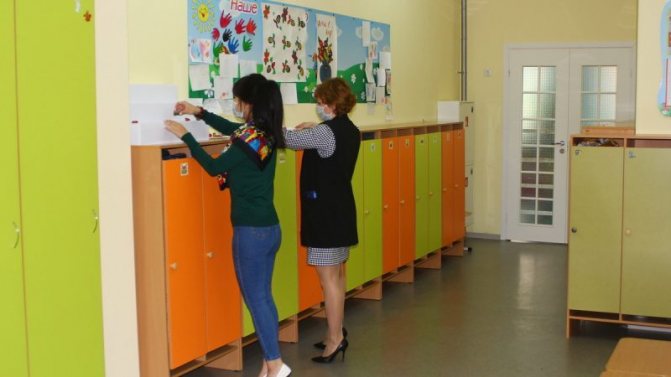
In the capital, schoolchildren will go on an extended vacation for a period of 2 weeks from October 5, 2020. The reason lies in the increase in the number of coronavirus patients. The unusually long holiday period affects the interests of all those who are members of organizations providing education of the following types:
- initial;
- basic general;
- average general;
- additional;
- sports and preparatory.
Based on the official document, kindergartens in the Russian capital have both functioned and will continue to do so without significant changes. This will allow working parents to continue working without depriving the family of sources of income. Sports schools, as well as sections of various types, will still be forced to arrange 2 weeks of rest for students in order to follow the instructions of the head of the city.
Main requirements for cleaning in kindergartens
When following the SanPiN cleaning regulations, it is worth considering that all cleaning products used must be safe and hypoallergenic.
The cleaning of preschool premises should be regularly monitored by the head of the preschool institution, and also periodically checked by specialized government agencies.
Cleaning the kindergarten territory:
- Cleaning up waste on site;
- Sweeping sidewalks and areas;
- Seasonal leaf removal and snow clearing;
- Caring for green spaces.
Cleaning in the kindergarten is carried out in accordance with the requirements of SanPiN 2.4.1.3049-13 for the maintenance of preschool educational institutions.
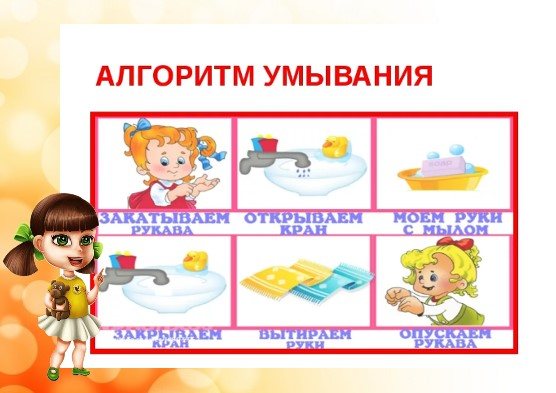
Why do you need to clean kindergarten carpets?
During use, dust, small debris and other contaminants accumulate in the carpet pile. Subsequently, dust mites begin to multiply in the thickness of the textile - a powerful allergen and source of infections. In addition, helminth eggs are sometimes found in the pile.
Only proper systematic carpet care can prevent kindergarten students from developing diseases, such as colds or bronchitis, as well as allergic reactions, which can ultimately lead to asthma.

Quartz treatment and ventilation
Clean indoor air is not only a prerequisite for comfortable well-being, but also a guarantee of the health of pupils. According to the requirements of SanPiN, quartzing of premises is carried out twice a day - in the morning and in the evening.
Ventilation is an important step in helping to work out and disinfect the group.
Through aeration occurs without the presence of children, regardless of the weather.
Ventilation through bathroom windows is prohibited. Airing is carried out while the children are walking and ends half an hour before their return.
It is recommended to ventilate groups every time preschool premises are cleaned. It is recommended to ventilate when cleaning kindergarten premises. Refreshment of bedrooms is carried out 10 minutes before bedtime. If the outside temperature allows, children are left to sleep with the windows open.
Benefits of professional carpet cleaning
Let's figure out how specialized cleaning differs from ordinary cleaning, which can be carried out by employees of an educational institution or parents of students.
1. Cleaning companies use only certified products and equipment. 2. Cleaning is carried out on site, so this type of service is relevant for absolutely any season. 3. Short deadlines for completing the work, so kids won’t have to walk on the bare floor for weeks. 4. Dry cleaning will get rid of the most stubborn stains, stubborn dust and dangerous microbes that have settled in the thickness of the carpet. 5. After cleaning, the pile will rise, become softer, and its color more saturated. 6. Dry cleaning will get rid of unpleasant odors.
Thus, a perfectly clean carpet means not only the absence of stains and dust, but also safety, comfort and an atmosphere of freshness. If you want to see from your own experience the advantages of professional carpet dry cleaning, contact the specialists!

